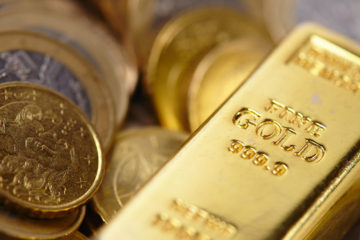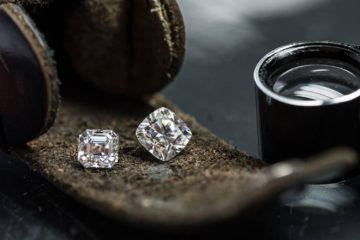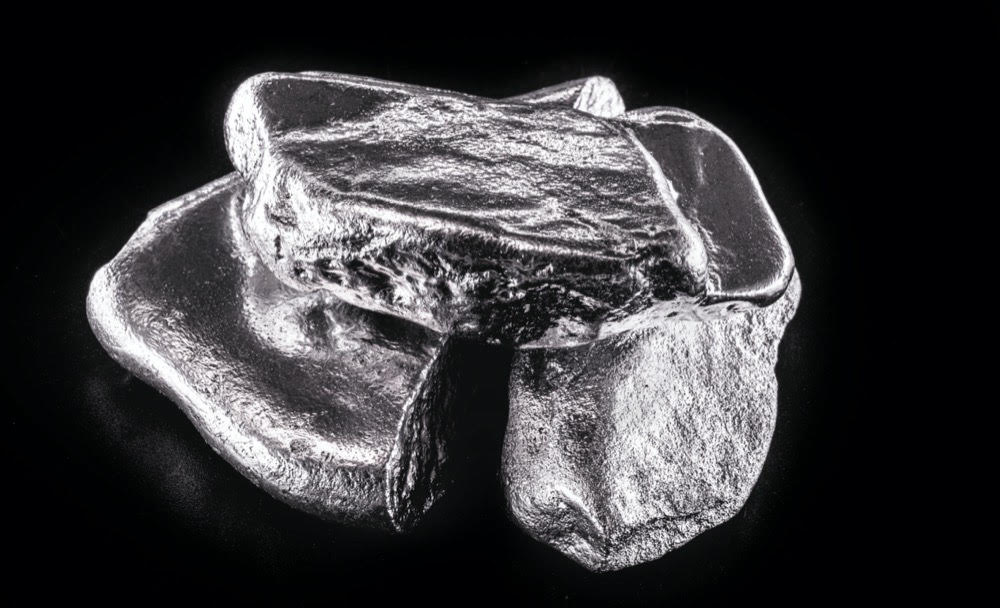
Each year, thousands of people decide that they are going to invest in precious metals. Here, many of them come across platinum and the rarer, palladium. They then ask themselves: platinum vs palladium? Which is the better investment?
In recent weeks, we have looked at whether you should invest in platinum or not. On top of this, we have also looked at which is the better investment: silver or gold? As well as gold and platinum?
Practicality
Unlike silver, both platinum and palladium are fairly expensive metals. This means that you are going to need a lot more money to invest in either metal, than you would if you bought a cheaper metal such as silver.
In many ways, this makes platinum and palladium rather impractical as investments. In many more ways, this also makes platinum and palladium more practical than other investments.
For starters, both platinum and palladium retail at well over $1,000 per ounce. Palladium, on the other hand, retails for well over $2,000! This makes it rather unaffordable for many investors.
Those who can afford it, however, are relegated to only being able to buy a few ounces of either metal. In this regard at least, platinum is the more practical metal, mostly due to the fact that it is the cheaper metal.
By the same token, if you were looking to invest huge amounts of money, palladium would be the more practical metal. This is because you can hold more value in a smaller amount of metal.
This latter point also makes storage (which we’ll get onto in a minute) much easier too!
Let’s say you had to pay a “small” bill of $1,000. You could sell your one ounce of platinum, and that’s that. Alternatively, you could sell your one ounce of palladium, and have roughly $1,000 left over at the tend of it.
Types
Whenever we think of investing in precious metals, such as platinum and palladium, we often tend to think of buying bullion bars. This is mostly thanks to them being the most common form they come in!
A number of long-established mints around the world, including the Royal Mint, PAMP and the Canadian Royal Mint, produce both platinum and palladium bullion bars.
Sadly, due to the rarity of investment-grade platinum and palladium, most mints won’t produce bars over one ounce. Those mints that do produce bars over one ounce, often produce the bars to order, thus taking longer.
Other than coming in the form of a bullion bar, platinum is also prized by coin collectors as a great metal for coins. Often, you can buy one ounce commemorative platinum coins for less than their gold equivalents!
It may come as a surprise, but there have also been a number of palladium coins struck. As with their platinum equivalents, these coins are technically legal tender, but are rarely, if ever used as such.
Recent years have seen the price of raw palladium skyrocket. In turn, this has seen the price of palladium bullion coins skyrocket too, meaning that no one really buys them. As such, not many have been produced since 2000!
Uses
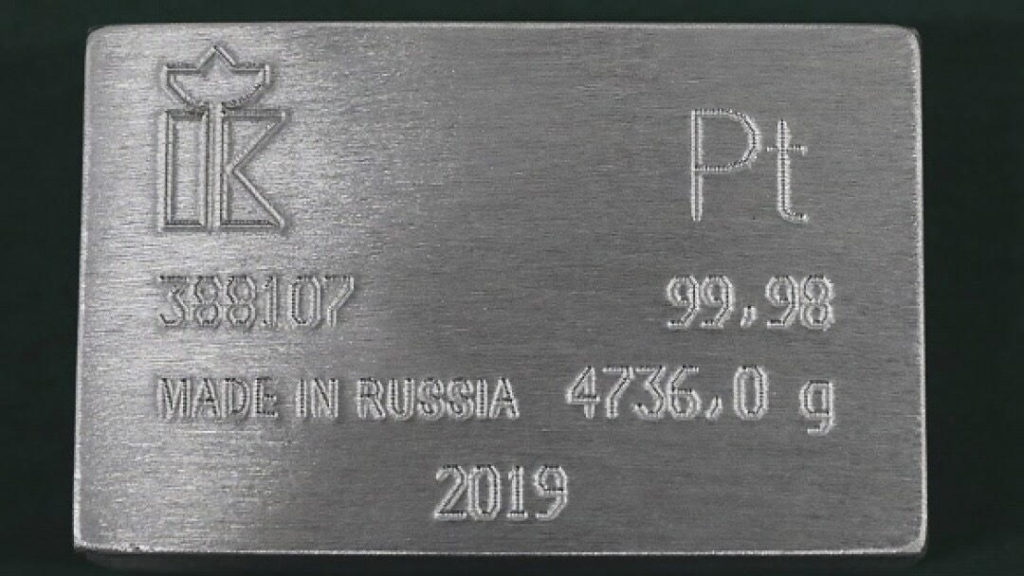
On top of coming in the aforementioned forms, both platinum and palladium have a number of different uses. Commercially speaking, both metals are extremely important to the world’s economy.
Perhaps most famously, platinum is used in catalytic converters in cars. Beyond just that, platinum is extremely useful in the medical world, being used for wiring in most medical equipment and in certain dental surgeries themselves!
With that being said, when/if platinum is not available, manufacturers and dentists turn to palladium instead. This is because both metals have the same kinds of chemical properties, which make them great for these kinds of jobs.
That’s all well and good, but most investors don’t really care about these uses of platinum and/or palladium. Instead, they are often more interested in platinum and palladium when they’re used as jewelry.
Due to their durable nature, high prices and glamor, jewelers have prized both metals. Traditionally, they have made for great wedding rings, but in recent years, have also been used for necklaces, bracelets and earrings too!
Often, due mostly to their higher prices, platinum and palladium jewelry are considered to be on the upper end of jewelry. Naturally, platinum and palladium jewelry are more expensive than gold and silver jewelry.
Palladium jewelry is more expensive than platinum ones (assuming the specs are the same!)
Price
Speaking of price…
Historically speaking, both metals have been the two most expensive metals of the four most common precious metals (silver, gold, platinum and palladium). Today, however, this is becoming less and less of the case.
In recent years, gold’s popularity has soared higher than ever before, with many people heralding it as a safer investment than other types of investments such as stocks and/or real estate.
In turn, this added demand for gold has caused its price to rise dramatically. This has seen gold displace platinum as the world’s second most expensive precious metal!
Regardless, as of the time of writing, palladium is trading at $2,300 per ounce, exactly. At the same time, platinum is trading at $1,102.06 per ounce.
In real terms, this means that if I had $10,000 to invest in both platinum and palladium (at current prices), it would buy me:
- 4.3 ounces of palladium
Or
- 9.1 ounces of platinum
Safety Net
Most of the time, whenever investors buy precious metals like platinum or palladium, they don’t solely invest in them. Instead, their platinum / palladium holdings make up on a tiny fraction of their total investments portfolio.
Usually, the investors have other investments, be it real estate, stocks, bonds or whatever! Instead, they buy platinum or palladium in order to strengthen and diversify their current holdings.
This creates what is commonly known as a safety net for investors.
You see, during what are known as economic booms, stocks and real estate are also booming. Their prices are increasing week-on-week, month-on-month, year-on-year, and all is good in the world.
Due to this, everyone is investing in stocks and real estate, which aids in the price continually increasing. At the same time, the price of precious metals, such as platinum and palladium are down.
However, during economic downturns and recessions, stocks and real estate are down. people simply don’t want to buy them. Instead, precious metals like platinum and palladium are up.
All in all, during recessions, platinum is the better metal to have. In the most recent recession (as of the time of writing), platinum increased in value by 71.52%, whilst palladium only increased by 44.84%.
Volatility
For the overwhelming majority of investors, we hate volatility. Even though there is a possibility to make millions of a simple change in price, there is also a possibility for us to lose just as much, often more.
As such, when we come to investing in precious metals such as platinum and/or palladium, we often look at how volatile they’ve been in the past. Whilst it doesn’t necessarily indicate future volatility, it’s better than nothing!
Compared to other precious metals like silver and gold, both platinum and palladium are considered to be quite volatile. However, when compared to one another, platinum is clearly the more volatile of the two.
20 years ago, the of platinum was at $552 per ounce, exactly. Today, platinum is worth around $1,102.06.
During this time, its price has gone up and down repeatedly, often going from around $1,000 per ounce, up to almost $2,000 per ounce, before coming crashing back down again. All within the same month.
At the same time 20 years ago, palladium was $970 per ounce, exactly. Today, an ounce of palladium is worth around $2,300 per ounce.
During this time, the price has gradually increased, going down every now and then. With that being said, over the past two years, the price of palladium has increased almost threefold.
Long Term Returns
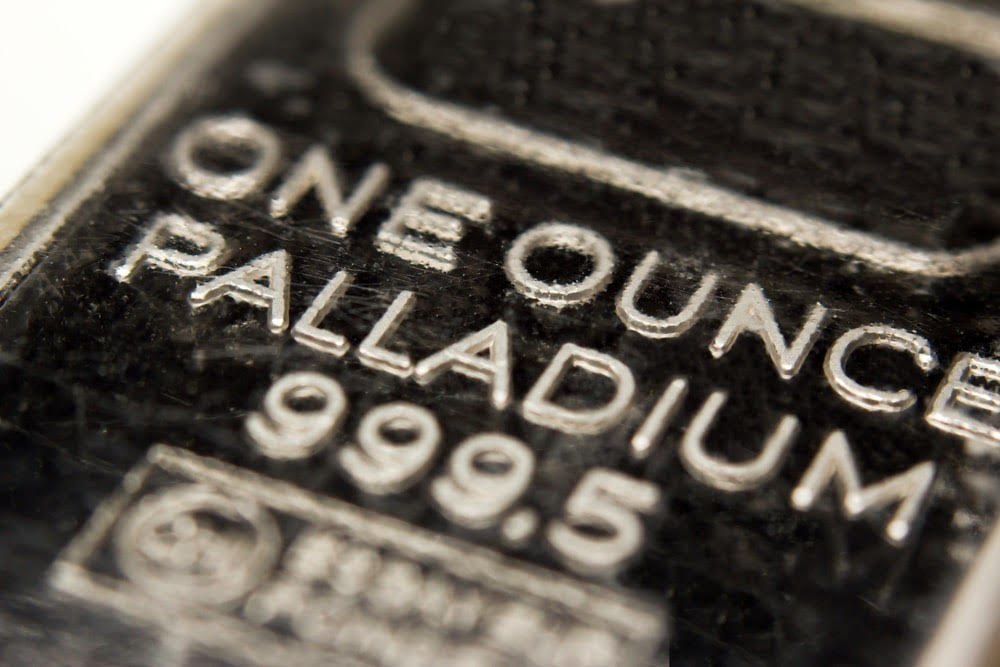
When most investors invest in something, we tend to hold onto it for a long time. Whilst each investor will hold onto their investments for differing amounts of time, most investors tend to hold precious metal investments for around 20 years.
As investors, we are pretty much always looking to get the best return on our investments. This includes our precious metals investments!
Had you bought $10,000 worth of platinum or palladium 20 years ago, you’d probably be pleasantly surprised as to how much it’d be worth today!
20 years ago, the price of platinum was roughly $552 per ounce. Today, that same ounce would be worth $1102.06. In total, that’s a 99.65% increase in price.
At the same time 20 years ago, palladium was worth roughly $970 per ounce. Today, one ounce of palladium is retailing for $2300, roughly increasing in value by 137.11%!
During this time, there was roughly 47% inflation. When it comes to precious metals investing, inflation is the largest killer of our profits. Regardless, both metals actually made a net positive.
In total, palladium was the stronger metal (in this case), netting 100.11% in profits. Platinum, on the other hand, only netted a still respectable, 52.65% in profits.
However, it must be said that platinum did peak at a much higher return during this time. Had you sold it then, you would’ve netted a much higher profit, had you invested in platinum rather than palladium.
Storage
As investors, we often tend to buy precious metals, such as platinum and palladium, in their physical form. This then causes us to worry where and how we are going to store our precious metals.
Luckily, most reputable bullion dealers offer some form of complimentary storage when you buy from them. Usually, this costs a small fee each year, but is occasionally free, usually because you’ve bought a large amount of platinum/palladium.
Naturally, this fee differs from dealer to dealer. For some it is a flat fee based on the total weight of the platinum/palladium they are storing. For others, it is a percentage based system, based on the individual weight of the bars.
As a part of this deal, many dealers allow you to have your platinum/palladium shipped to you, at any time. The overwhelming majority of investors choose to have their platinum/palladium shipped to them.
Due to both metals being extremely dense, you can store large values of money in a relatively small amount of space. Going back to the $10,000 worth of platinum/palladium from earlier, you’d either have 4.3 ounces of palladium or 9.1 ounces of platinum.
Both of these can easily be stored in small, personal safes. Due to the fact that they take up a relatively small amount of space, you could purchase a safe with an insurance rating of $10,000 (valuables) which retail for as low as $200!
Naturally, you could choose to purchase a much larger safe with a higher insurance rating. Naturally, this will be more expensive. Potentially much more expensive.
Availability
Both platinum and palladium are naturally-occurring precious metals. Although we are making headway in producing lab-grown platinum and palladium bars, it’s not commercially viable yet.
As such, the only way that we can get either metal is the old-fashioned way: By digging it out of the ground and refining it at a refinery. Due to this, both metals are considered to be finite resources. One day, we will run out of them.
To date, there have been numerous studies aiming to determine when our stocks of platinum and palladium (as well as other precious metals!) will run out.
Although estimates vary, the general consensus is that we have less than 10 years before we run out of platinum. The same estimates predict that we will also run out of palladium in less than 15 years too!
Due to this, people are stockpiling precious metals such as platinum and palladium, with the hopes that their prices will skyrocket when we do eventually run out of them.
As of the time of writing, it seems that more people are stockpiling palladium than platinum. This is likely due to palladium having a higher trading price, meaning that it will likely increase by more in the long term!
Platinum vs palladium? Which would you invest in? Tell me in the comments!

